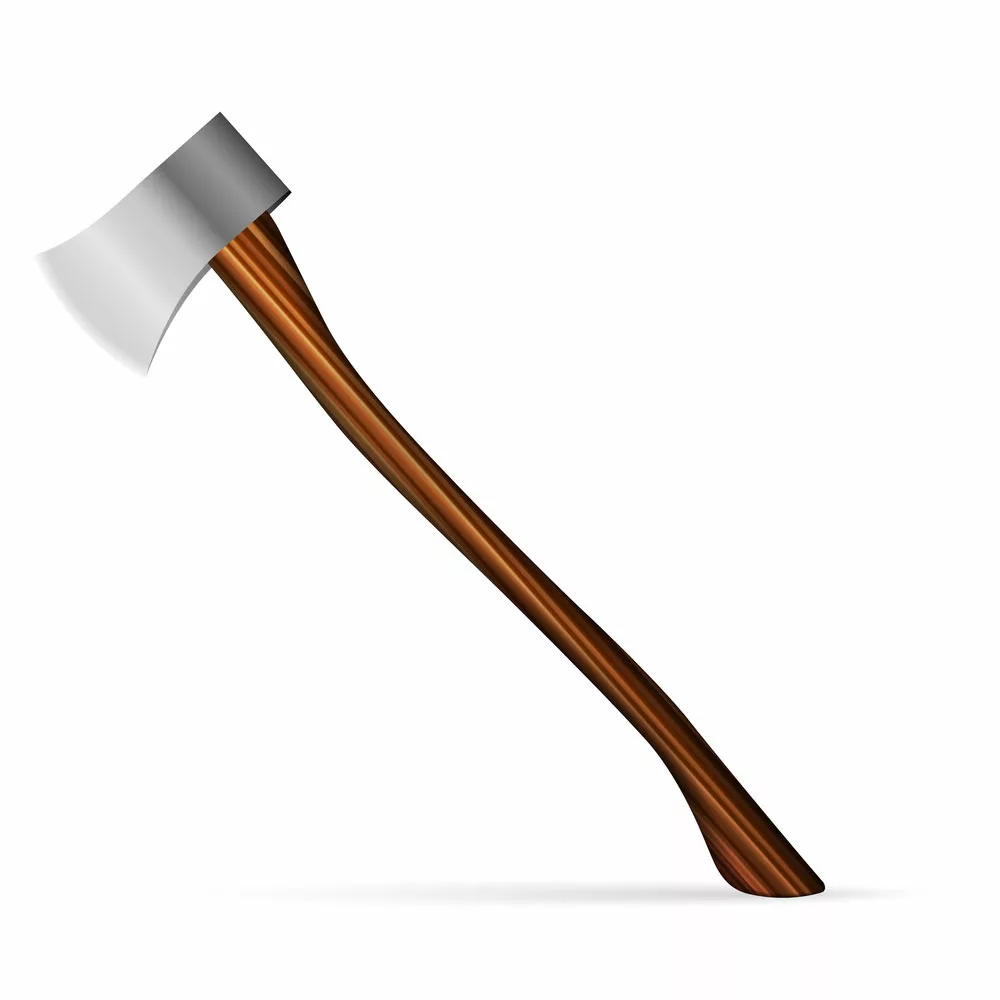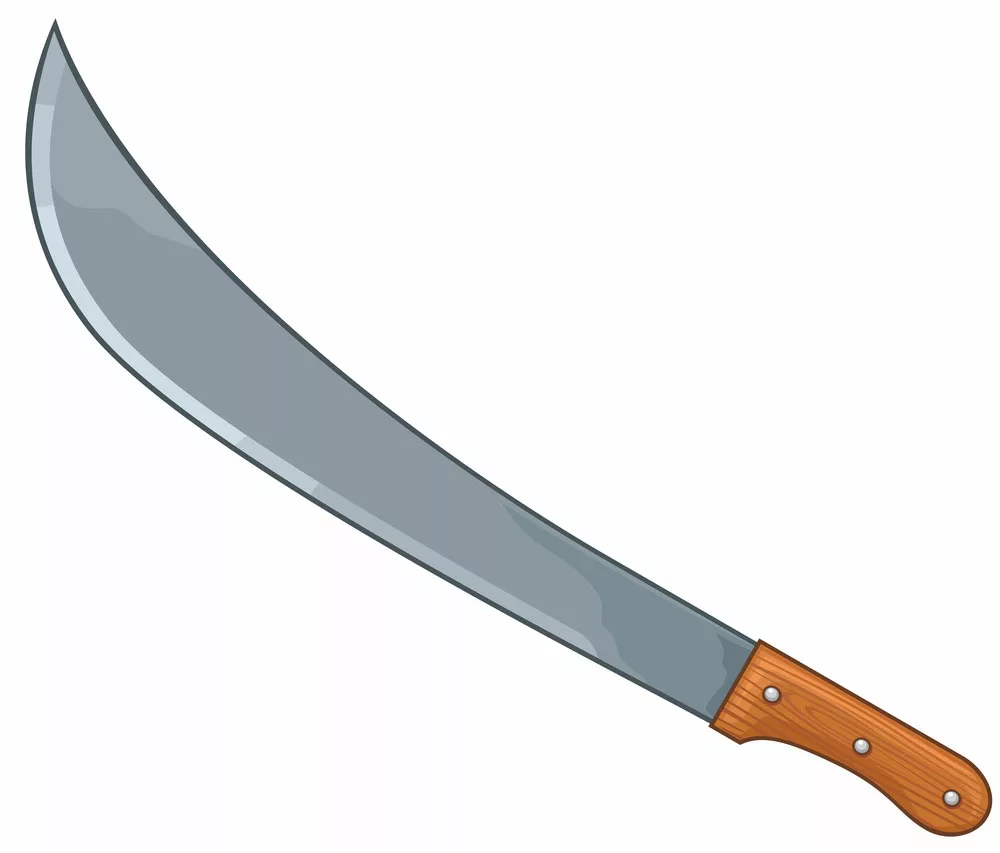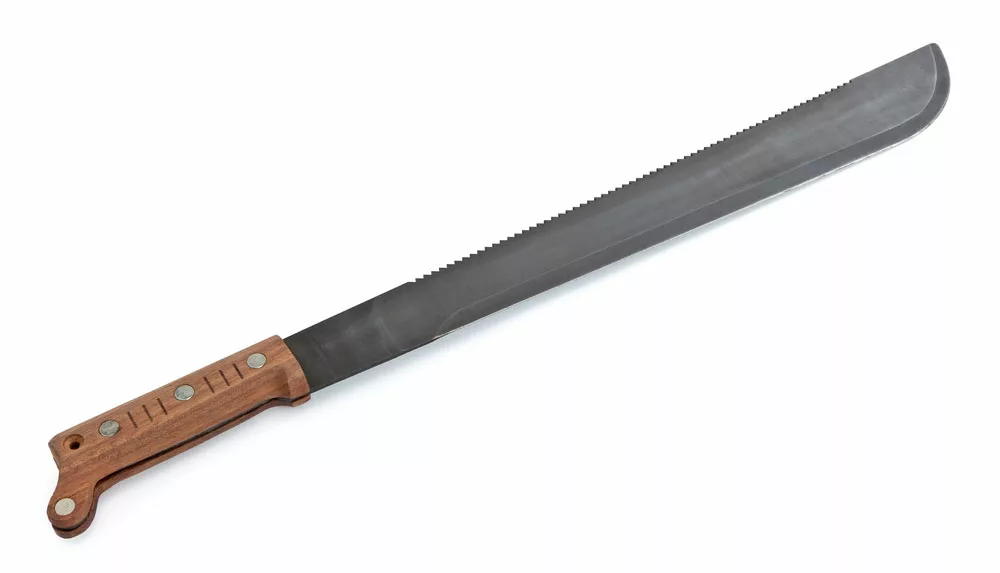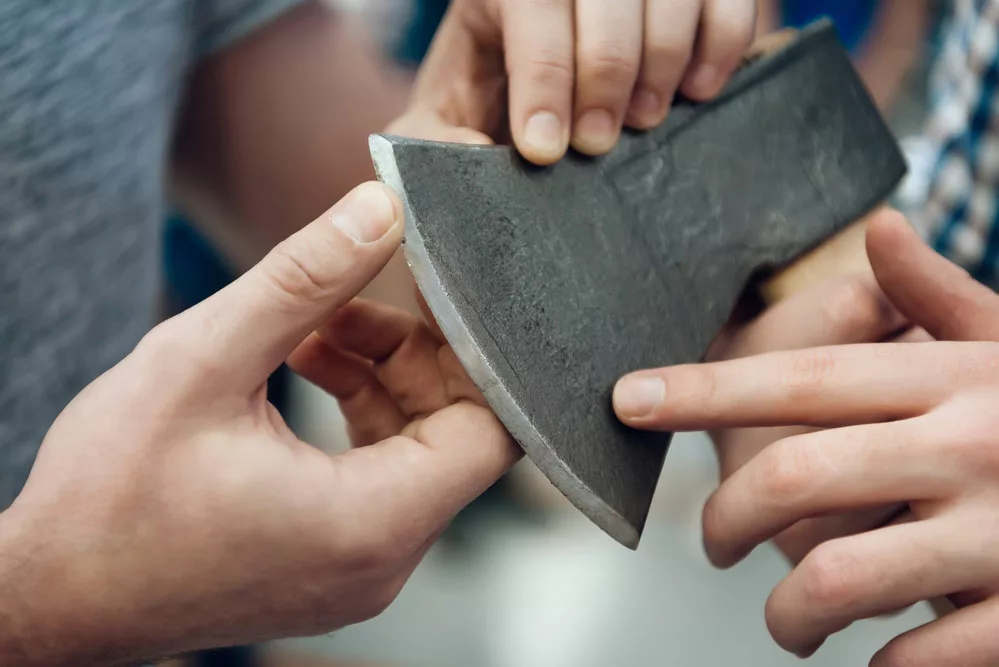Both axes and machetes are cutting tools. But more importantly, when you compare brush axe vs. machetes, you’ll discover they cut different things.
It’s up to the user to know which tool between the two will give him maximum efficiency and performance.
Therefore, this article will discuss the brush axe and the machete and determine where to use each tool. Let’s begin!
Brush Axe Overview
A brush axe is a great tool for cutting down trees and thick shrubs. There are many brush axes available in the market. Some include;
- Fiskars 9” Brush Axe,
- Fiskers 29” Machete Axe,
- Forgecraft Ditch Bank Blade,
- Council Tool Brush Axe.
The Fiskers company produces quality axes based on performance and design. Their blades do not rust and have low friction.
Also, you do not have to worry about the blade slipping off since they are molded into the handle.
The difference between a 29” and a 9” Fiskars is the blade size. If you need to clear a large bush area, the 29” is the perfect option.
A Forgecraft Ditch Bank blade is an axe with a unique blade suitable for areas on a slope. The unique blade shape allows for maximum reach.
Lastly, a CouncilTool Brush Axe has a very long handle. This axe is suitable for people with back pains since it reduces the amount of bending.

(axe with a wooden handle.)
Machete Overview
Machete has features similar to that of a knife but bigger. It has a longer blade and a longer handle compared to a knife. Thus its function is mainly to slice.
Aside from slicing, machetes can also work as chopping tools. It can only be the case if the blade is longer because longer blades make the swing comfortable and safe.
There are several types of machetes available. Some include:
- Latin machetes
- Parang machetes
- Panga machetes
- Bolo machetes
- Bowie machetes.
All these machetes work for the same purpose. The only difference is in their structure. For example, a Latin machete has a straight back and a large front curve, which is the most common in most homes.
Also, there’s the Panga, Bolo, and Parang, which have a similar pattern to Latin but are not as popular. Their only contrast to a Latin machete is that the panga blade has a wider back.
The Parang machete features a back curve and an edge slightly shorter and thicker. And the Bolo has a more pointed tip, but its back is straighter.
We also have a Bowie machete or a Bowie Knife. This machete has a shorter blade that is best for skinning wildlife. You cannot use this blade for clearing bushes.
It is because it’s unstable during a swing since the area close to the head weighs less.

(an illustration of a machete)
Brush Axe Vs. Machete Comparison Table. Which Is Better?
| Machete | Brush Axe |
| Not suitable for landowners | Suitable for landowners |
| Not appropriate for fall trees | Best tool for felling trees |
| Works best when clearing bushes. | Not ideal for clearing bushes. |
| Not suitable for camping. | The best tool to use during camping. |
| Weighs between 1-2 pounds. | Weighs between 3-5 pounds. |
| Shorter handle length, usually between 5-6 inches. | Longer handle length, usually between 16 to 30 inches. |
| Have longer blades. | Have shorter blades. |

(a machete with a short wooden handle.)
How to Use a Brush Axe
There is no particular way to use a brush axe. Some use it as a regular axe, while others use it s a chainsaw. All in all, your choice depends on the length of your handle and the work at hand.
For instance, if you want to clear bushes, use the axe horizontally. It will allow you to cover more ground hence fastening the process. But if you need to chop down trees, you’ll need to swing the axe vertically, just like a regular axe.
Also, the length of the handle matters a lot when it comes to how you want to use a brush axe. An axe with a short handle will be challenging for bush clearing if you are tall. That said, such axes are best for use as regular axe.

(man holding a regular axe)
How to Use the Right Tool
Best For Clearing Bush
A machete has a longer blade; therefore, it’s the best tool for clearing bushes. The long blade is handy because you can clear a larger surface area with only one swing.
Best For Felling Trees
Axes cut down trees better than machetes. An axe works with more force and hence cuts quickly through the wood.
There’s a type of axe called a felling axe. As their name suggests, felling axes are for cutting down trees, and they are very popular.
The structure of this axe allows the head to receive all the energy making a concentration of force in one area. As such, the cutting process becomes easier and simpler, especially for larger trees and thicker logs.

(different types of machetes.)
Best For Camping
When planning a camping trip, a machete might be more practical than a big axe. But a hatchet may be the ideal camping tool.
Hatchets are little axes, thus convenient for light-clearing and chopping tasks. Additionally, you can use them to cut up small logs for firewood.
Also, a hatchet is convenient for anyone who wants an escapade in the jungle. They are multipurpose because you can use them to make a shelter, cut rope, wood, or both.
However, we recommend a machete if you intend to cut through a lot of bush, such as when traveling off-trail.
Best For Landowners
As a landowner, you can only use a machete to clear bushes, but axes have more functions. For example, hatchets are very versatile. They can help you remove light bushes, fall small trees, and cut or split firewood.

(an axe blade.)
Conclusion
These two tools have more advantages than disadvantages depending on the type of work. Therefore, Knowing which tool is best for a particular job is necessary. We hope our guide gave you the necessary insight in choosing your tools.
